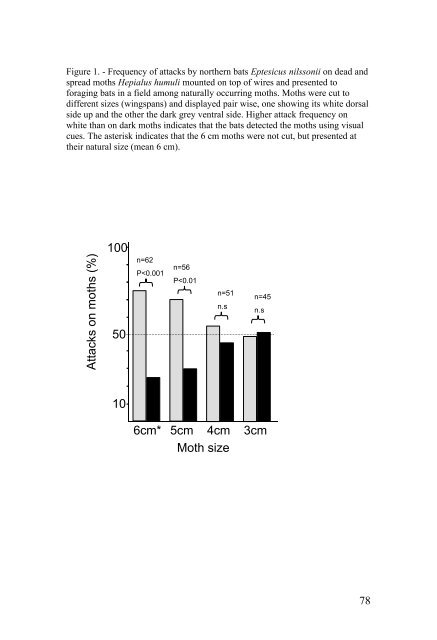Vision in echolocating bats - Fladdermus.net
Vision in echolocating bats - Fladdermus.net
Vision in echolocating bats - Fladdermus.net
Create successful ePaper yourself
Turn your PDF publications into a flip-book with our unique Google optimized e-Paper software.
Figure 1. - Frequency of attacks by northern <strong>bats</strong> Eptesicus nilssonii on dead and<br />
spread moths Hepialus humuli mounted on top of wires and presented to<br />
forag<strong>in</strong>g <strong>bats</strong> <strong>in</strong> a field among naturally occurr<strong>in</strong>g moths. Moths were cut to<br />
different sizes (w<strong>in</strong>gspans) and displayed pair wise, one show<strong>in</strong>g its white dorsal<br />
side up and the other the dark grey ventral side. Higher attack frequency on<br />
white than on dark moths <strong>in</strong>dicates that the <strong>bats</strong> detected the moths us<strong>in</strong>g visual<br />
cues. The asterisk <strong>in</strong>dicates that the 6 cm moths were not cut, but presented at<br />
their natural size (mean 6 cm).<br />
Attacks on moths (%)<br />
100<br />
50<br />
10<br />
n=62<br />
P


